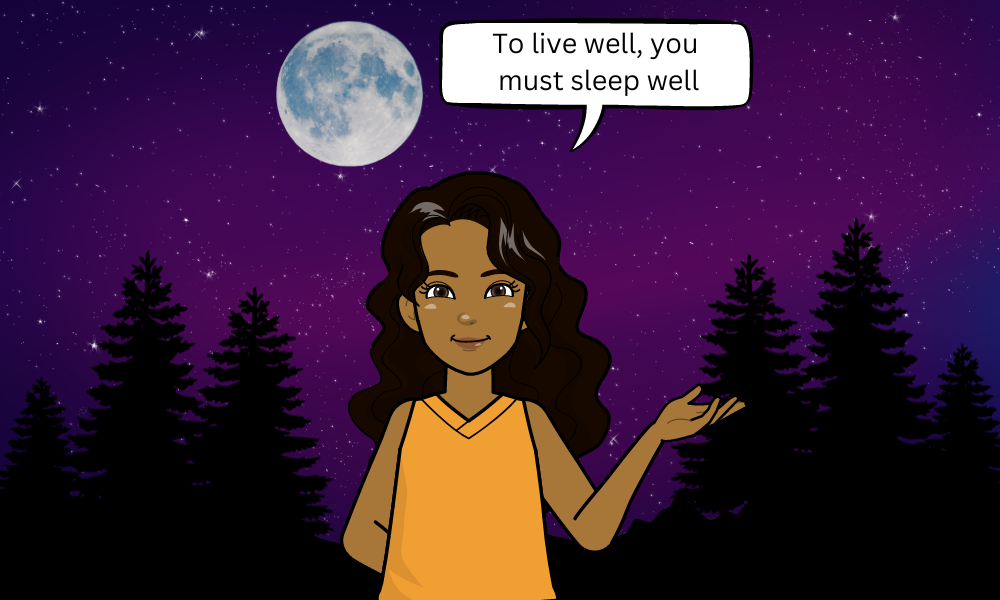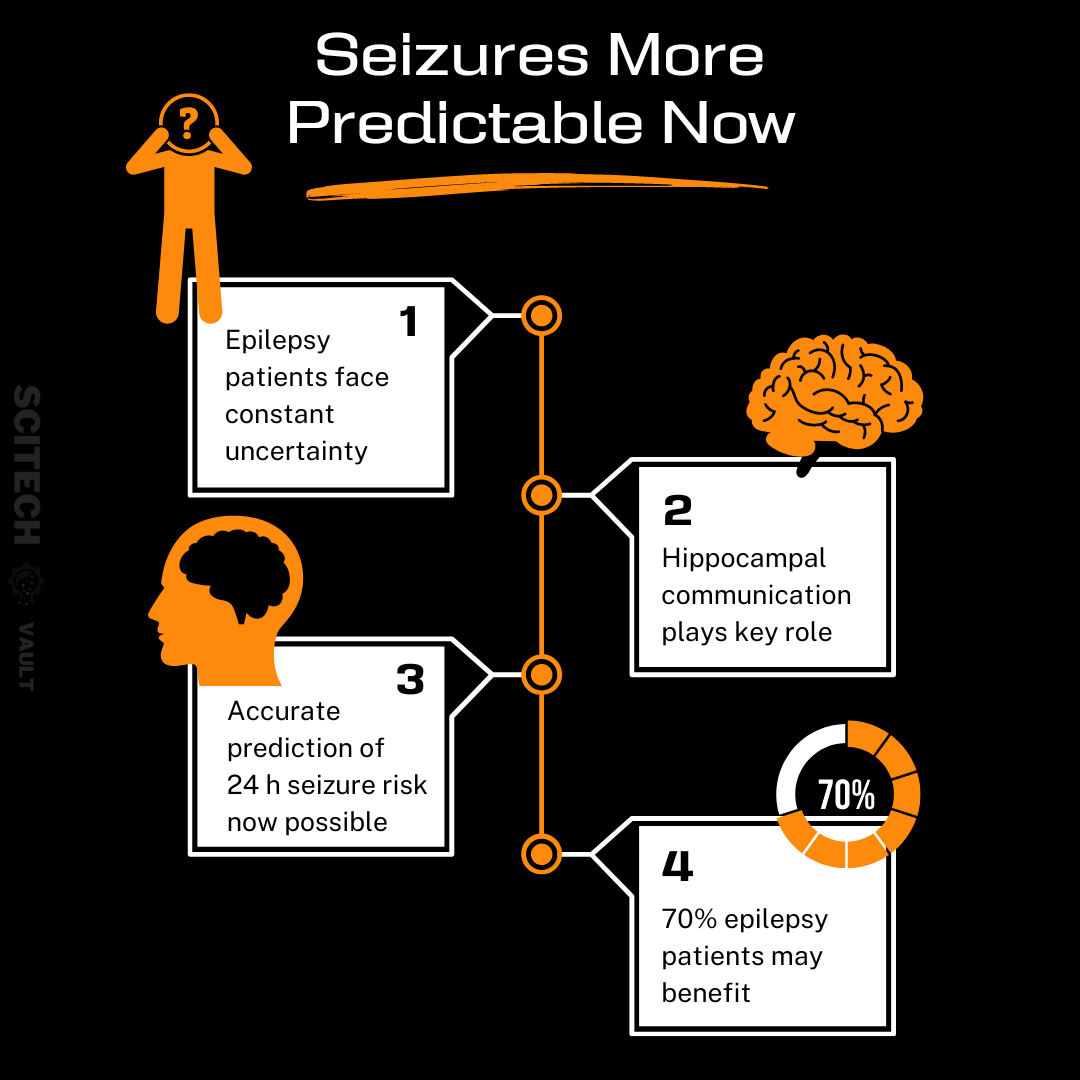Health
Clinical Studies on the Association between Music and Sleep
Researchers clinically examine the benefits of music-assisted sleep

Natalie had been sleeping like a baby, every single night, for the past thirty years. However, because of work-related stress, she had lost her sleep recently. She had already gone through several listicles highlighting the common strategies used for inducing sleep (e.g., soothing music, massage, aromatherapy, avoiding blue light/caffeinated products, copulation, physically holding a book and reading it, writing (with a pen/pencil), staying away from electronic gadgets before hitting the bed, positive thinking, behavioral therapy, clinical intervention, drinking milk/chamomile tea, eating pumpkin seeds, eating supplements containing magnesium/melatonin/omega-3 DHA, exercising during the day, unwinding with a warm bath in the evening, having a balanced diet, avoiding food just before going to bed, practicing meditation, ensuring good sleep hygiene, etc.).
However, Natalie was pleasantly surprised when she came across multiple clinical studies examining the therapeutic effects of music on sleep. Let’s dive in deep and go through the peer-reviewed journal articles that pleasantly surprised Natalie.
Is sleeplessness (insomnia) bad for you?
If you are unable to fall asleep one night, there’s nothing much to worry about. However, published scientific evidence clearly indicates that persisting insomnia is not good for your physical and mental health in the long run. For instance, a meta-analysis-based clinical study published in the European Journal of Preventive Cardiology clearly shows that insomnia increases the odds of dying from cardiovascular disease by as much as 45%. This questionnaire-based study had a sample size of 122,501 individuals. Researchers surveyed them for periods ranging from 3 to 20 years before drawing the above conclusions. Yet another published report says that chronic insomnia may lead to hypertension. Sleep disorders have also been clinically linked to the onset of type 2 diabetes. Researchers have also found an association between insomnia and dementia. Insomnia could also lead to Alzheimer’s disease according to another study.
Sometimes, it could also be the other way round. For example, patients with infectious diseases (acute viral infection, HIV infection, etc.) or cancer may also experience insomnia. However, just because you experience sleeplessness does not automatically mean that you have cancer. Therefore, if you are suffering from insomnia, then the right thing to do is to consult a healthcare professional in a timely manner, find out the underlying reason(s), and fix the insomnia using various clinician-outlined strategies (e.g., Cognitive Behavioral Therapy for Insomnia or “CBT-I”).
What does sleep music sound like?
Quite recently, researchers from Aarhus University, Denmark, carefully analyzed 225,000+ music tracks from more than 980 playlists. They found some interesting trends: Whereas music that aids sleep is generally soft, slow, and instrumental, the study clearly showed that some of the music listeners surprisingly slept well even after listening to fast, loud, and energizing music. The authors of the published study speculate that energetic songs presumably induce sleep when listeners are extremely familiar with the popular songs. The consonance and familiarity of these songs presumably offset the acoustic chaos that may otherwise result from their high energies, especially at night. Although further research is definitely warranted, experts believe that this may primarily happen because of the involvement of human emotion. How? Well, let’s investigate further.
Does music elicit an emotional response in the brain?
When researchers from the Max Planck Institute for Human Cognitive and Brain Sciences studied brain activity using functional magnetic resonance imaging (fMRI), they came across something startling: Unlike dissonant (unpleasant) music, consonant (pleasant) music was actually able to elicit strong deactivations in the amygdala. How is this presumably related to sleep induction? Well, that’s where the true fun begins! A published scientific study clearly shows that in sleep-deprived patients, the amygdala (aka the emotional center of the brain) is in an activated state. The activated amygdala exhibits a heightened responses to negative stimuli. Long story short, pleasant music (regardless of whether it is soft or energetic) deactivates the amygdala, thus suppressing responses to negative stimuli, and therefore induces sleep. Zzzzz…
Has anyone else studied the effect of music on sleep?
Yes, you will be surprised to know that multiple studies have established a clear association between pleasant music and sleep. For instance, when parent-preferred lullabies were sung to 272 premature infants with respiratory distress syndrome, the attending physicians saw something interesting: The premature infants started showing reduced heart rates, increased caloric intake, and improved sucking behavior.
After analyzing 20 clinical trials that included 1,339 patients and 12 intervention arms, clinicians found that listening to music was identified as one of the best non-pharmacological interventions for improving the overall quality of sleep. These studies incorporated the famous Pittsburgh Sleep Quality Index (PSQI) scores. Whereas lower PSQI scores corresponding to sound sleep, higher PSQI scores are indicative of poor sleep.
Warning: It would be very unfair if we were to hide a prominent study showing that listening to music before going to sleep actually disrupts sleep (in some people). Here’s the link.
What else can music do for you?
Dentists worldwide are currently using non-pharmacological interventions including music-assisted relaxation to reduce patient anxiety during oral care visits. Movie directors regularly use music to influence patrons inside movie theatres. In fact, a study shows that an effective movie soundtrack can increase the overall impact of the film’s story.
You will be surprised to know about the positive impact of music therapy on children with leukemia who have peripherally inserted central catheters (PICC). The study highlighting the benefits states that music therapy can not only shorten the treatment duration but also reduce the use of sedative medications in pediatric patients with PICC. Moreover, music therapy also improves children’s emotion and pain response to a clinically significant extent.
A meta-analysis-based study recommends using music therapy in emergency rooms to alleviate patient pain and anxiety. Here’s the underlying principle: Pain receptors deliver pain signals to the brain. However, music can act as a distractor and block the pain pathway, thus decreasing the brain-perceived pain. In fact, magnetic resonance imaging studies show that listening to music triggers dopamine release, and dopamine is widely revered for inducing central analgesia. In other words, music decreases pain.
Can music boost mental health and performance?
Randomized controlled clinical trials demonstrate that music therapy and other music-related non-pharmacological interventions are clearly associated with reduced anxiety, reduced depression, and diminished post-traumatic stress disorder symptoms. In fact, music therapy (customized music interventions that are initiated by a trained and qualified music therapist) has generated immense interest in the medical and mental healthcare settings. A multilevel meta-analysis-based study has shown that music therapy lowers stress-related patient outcomes.
Quite recently, clinicians from Denmark conducted a two-armed randomized controlled trial on patients with depression and insomnia. During the clinical trial, the treatment group listened to music before going to bed. They did this for a period of 4 weeks. The control group did not listen to any music before going to bed (also for 4 weeks). The results were enigmatic: The treatment group witnessed significant improvements in sleep quality and overall well-being, as evident from their PSQI scores.
You will be surprised to know that soothing music is commonly played inside operation theatres to boost surgical performance and mitigate patient anxiety. Quite interestingly, a related study states that classic music played with a low/medium volume enhances surgical speed and accuracy.
Can ASMR induce sleep?
Anyone who has been on YouTube knows what Autonomous Sensory Meridian Response (ASMR) exactly means. In recent years, YouTubers have posted literally millions of ASMR videos on the video-sharing platform. But here’s something much more interesting: A 2018 clinical study published in PLoS One says that ASMR is a physiologically-rooted therapeutic experience and that it can offer both physical and mental health benefits. As we know by now, both of these already correlate well with sound sleep.
Researchers from Japan took ASMR to the next level by monitoring the brains of ASMR and music enthusiasts using fMRI. The researchers concluded that both classical music and ASMR exert a soothing effect on our brains. They both seem to relax our minds, according to the published study. However, researchers need to explore ASMR further to find any likely (direct) associations between ASMR and sleep.
Note: A published study found no association between ASMR and sleep. However, it has a big limitation: It was purely based on self-reported alleviation of symptoms. Therefore, scientists need to design a more direct study to better understand the (likely) soporific effects of ASMR. Meanwhile (and on a positive note), researchers who published a study in the Swiss journal Frontiers in Human Neuroscience claim that ASMR is likely to induce the right type of brain signals required for inducing sleep. The team also says that ASMR videos produce psychologically comfortable states. This study, however, has a tiny sample size.
Key takeaways
- Natalie enjoys listening to instrumental music. Do you enjoy listening to music too? Does consonant music make you fall asleep? Would you like to continue listening to relaxing music before hitting the bed based on everything that has been mentioned in the above studies?
- Note: Whereas listening to consonant music for falling asleep seems like a legitimate activity, fumbling with your smartphone while relaxing in your bed is definitely not the suggested protocol. Some people find middle ground. For instance, they listen to deeply relaxing music before hitting the bed. However, once they step into their bed, they avoid touching any gadget and go to sleep. A few others listen to relaxing music in their living room, switch it off, step into their bed, hold a printed book in their hand, read it for a while, and doze off when they start feeling sleepy. Any other epic ideas? Did you also try some of the ideas mentioned in the introductory paragraph? What has worked for you so far? Do share your thoughts with us in the comments section below. Meanwhile, please do consult a healthcare professional if you are finding it difficult to sleep. Always remember that insomnia is not good for your health. So make sure you fix it in a timely manner.
- Would you like to examine more closely, the effects of music on insomnia? Do let us know in the comments section below.
By the way, did you know that choline is necessary for ensuring good mental health?

Challenge
Epilepsy patients face the constant uncertainty of when a seizure might occur, making it difficult to manage daily activities. This adversely affects the overall quality of life. Current methods of predicting seizures require long-term data collection. Moreover, these methods can be burdensome and inaccurate.
Innovation
A team of epilepsy researchers at UC San Francisco has devised a method to predict 24-hour seizure risk by analyzing only 90 seconds of brain activity. This method (termed “snapshot seizure forecasting”) identifies abnormal communication between specific areas of the brain that precedes a seizure.
Implementation
The researchers recruited 15 volunteers with hippocampus-originating seizures, all of whom had responsive neurostimulation systems (RNSs) implanted. By analyzing the recorded brain activity data from these devices, the study authors found a pattern of communication between the right and left hippocampus that signaled an increased risk of seizures. Patients transmitted data from their RNS devices to the researchers, who then used an algorithm to forecast seizure risk.
Outcome
The new forecasting method allows patients to predict seizures within a 24-hour window, giving them sufficient time to take the necessary precautions (e.g., avoiding driving or ensuring the presence of a caregiver). This predictive capability drastically reduces the stress associated with the unpredictability of epilepsy. According to multiple surveys, up to 70% of epilepsy patients would use this system to help plan their daily activities.
Reference: https://doi.org/10.1038/s41591-024-03149-6
By the way, did you know that Pompeii was destroyed not by a volcano but by an earthquake that followed the volcano?

Jake and Emma were sitting in their villa garden on a sunny afternoon, catching up on the latest news and developments. As Jake sipped his green tea, he leaned forward with a curious expression. “Hey Emma,” he began, his voice tinged with excitement, “have you heard about that new migraine study?” He could barely contain his eagerness to share what he had learned, knowing Emma, with her keen interest in medical research, would be equally intrigued by the groundbreaking discoveries that might change the way we understand and treat migraines.
Emma: No, what’s up with it?
Jake: Well, scientists discovered a new mechanism showing how proteins from the brain travel to specific sensory nerves and trigger migraines. This could lead to new treatments for migraines with aura.
Emma: That sounds intriguing. Can you explain more?
Jake: Sure. In Denmark alone, where this animal-based study was conducted, over 800,000 people suffer from migraines, which are usually severe headaches on one side of the head. About a quarter of these patients experience an aura before the headache. This aura includes visual or sensory disturbances that occur 5 to 60 minutes before the migraine.
Emma: I’ve already heard about auras, so why is this study interesting?
Jake: This is indeed a landmark study because it could tell us more about why these mysterious headaches happen and why they are typically one-sided.

Breakthrough Animal Study
Emma: So, what did this new study find?
Jake: Researchers at the University of Copenhagen, Rigshospitalet, and Bispebjerg Hospital studied mice and discovered that during a migraine with aura, proteins released from the brain travel with cerebrospinal fluid to pain-signaling nerves at the base of the skull, specifically the trigeminal ganglion.
Emma: What’s the trigeminal ganglion?
Jake: It’s a cluster of sensory nerve cells located at the base of the skull, acting as a gateway to the peripheral sensory nervous system. Normally, there’s a barrier preventing substances from entering these peripheral nerves, but in the trigeminal ganglion, this barrier is missing. This allows substances in the cerebrospinal fluid to activate pain-signaling nerves, causing headaches.
Emma: That explains the pain, but why are migraines one-sided?
Jake: The study found that the proteins mainly affect the sensory system on the same side of the head where the migraine occurs. This explains why migraines are usually one-sided.
What is the global burden of migraine?
In 2016, nearly three billion people were estimated to have experienced migraines or tension-type headaches according to a Lancet Neurology report. This included 1.89 billion with tension-type headaches and 1.04 billion with migraines. Due to the higher disability weight of migraines compared to tension-type headaches, migraines caused approximately 45.1 million Years Lived with Disability (YLDs), whereas tension-type headaches caused nearly 7.2 million YLDs globally. Age-standardized Disability-Adjusted Life Years (DALYs) for each type of headache showed a slight increase with higher Socio-demographic Index (SDI) levels.
Potential for New Migraine Treatments
Emma: Interesting. Did the researchers find anything that could help with new treatments?
Jake: Yes, they used advanced techniques like mass spectrometry to analyze the proteins released during the aura stage of a migraine. They found that 11% of the 1,425 proteins in the cerebrospinal fluid changed concentration during migraine attacks, and 12 of these proteins could activate sensory nerves.

Emma: That sounds promising. Were there any familiar proteins in their findings?
Jake: They identified CGRP, a protein already associated with migraines and used in existing treatments. But they also found new proteins that could lead to new treatment options, especially for patients who don’t respond to current CGRP antagonists.
Emma: So, what’s the next step for the researchers?
Jake: They plan to identify the most promising proteins and conduct tests on humans to see if these proteins can trigger migraines. If successful, these proteins could become targets for new migraine treatments and prevention strategies.
Emma: It sounds like this research could make a big difference for many people suffering from migraines.
Jake: Absolutely. They also discovered that one of the proteins plays a role in menstrual migraines. Their goal is to identify proteins that trigger different migraine types and test them on humans to develop targeted treatments.
Emma: That’s really exciting. Hopefully, it leads to better treatment options soon.
Jake: I hope so too. It’s a significant step forward in understanding and treating migraines.
Key Takeaways
- New Mechanism Discovered: Researchers found that proteins from the brain travel to sensory nerves, causing migraines.
- One-Sided Headaches Explained: This new pathway explains why migraines are typically one-sided.
- Potential New Treatments: Identifying new proteins could lead to treatments for those who don’t respond to current options.
References
Kaag Rasmussen M, Møllgård K, Bork PAR, et al. Trigeminal ganglion neurons are directly activated by influx of CSF solutes in a migraine model. Science. 2024;385(6704):80-86. doi:10.1126/science.adl0544
GBD 2016 Headache Collaborators. Global, regional, and national burden of migraine and tension-type headache, 1990-2016: a systematic analysis for the Global Burden of Disease Study 2016 [published correction appears in Lancet Neurol. 2021 Dec;20(12):e7. doi: 10.1016/S1474-4422(21)00380-X]. Lancet Neurol. 2018;17(11):954-976. doi:10.1016/S1474-4422(18)30322-3
Health
Dinosaurs and Human Aging
Study claims that dinosaurs could be held accountable for human aging

We all know what aging is about—it’s a biological process with undesirable health consequences. But have you ever wondered why various species on this planet do not age in a similar manner? Have you ever questioned why mammals age faster than most reptiles and other vertebrates?
Dinosaurs Responsible for Human Aging?
A recent speculation published in the journal “BioEssays” may provide some meaningful answers. According to the author, dinosaurs seem to be largely responsible for the aging process in all mammals, including humans. Now, how is that possible? Well, this intelligent speculation, also referred to as the “longevity bottleneck hypothesis,” is based on the fact that most mammals who coexisted with dinosaurs faced constant evolutionary pressure. They dealt with the ongoing threat of being preyed upon by hungry dinosaurs. This constant threat exerted so much pressure on various mammalian species that their genetic programs switched gears, thus prioritizing rapid reproduction over everything else. This prioritization eventually led to the loss or inactivation of genes and biological pathways associated with a long life. In other words, dinosaurs could indeed be the reason why humans undergo aging today. On the other hand, non-mammals are the species that age the slowest. In fact, there have been reports of amphibians, reptiles, and fishes showing negligible aging or senescence.
Study Strengths and Limitations
Of course, the longevity bottleneck hypothesis has its own set of limitations. For instance, it could result from scientists characterizing mammals more than other taxa. However, setting aside this potential bias, the hypothesis appears intelligent and profound. Moreover, the study is not based on a random hypothesis, considering the solid molecular evidence it provides. For instance, scientific evidence clearly indicates that the photolyase DNA protection system was lost in the eutherian mammalian lineage during the time of the dinosaurs.
The DNA Protection System
So, what exactly could this system have done if it were present in our biological systems today? Well, it could have played a crucial role in protecting organisms from the harmful effects of ultraviolet radiation. UV radiation is known to induce DNA damage by creating structures called pyrimidine dimers. The photolyase DNA protection system targets and repairs the pyrimidine dimers induced by UV radiation. Unfortunately, the human species does not possess the photolyase DNA protection system, thus making it susceptible to various UV-radiation-induced cancers.
More Evidence
The published study further states that following the extinction of dinosaurs and the rise of mammals, the latter diversified to occupy numerous ecological niches, enabling them to increase in size. Fossils and phylogenetic evidence collected by scientists strongly support this argument. In line with the hypothesis, the diversification of mammals, more than 60 million years after the extinction of dinosaurs, resulted in a huge variety of species, many of which lead long and relatively healthy lives. For instance, did you know that elephants rarely get cancer? Were you also aware of the fact that bowhead whales enjoy a relatively cancer-free life of 200+ years? In fact, according to a post published by the journal “Science,” bowhead whales show hardly any signs of the age-related ailments that plague other animals, including humans. Although further studies seem warranted, the hypothesis nevertheless makes a remarkable contribution to evolutionary genomics.
Dinosaur Extinction
Speaking of dinosaurs, a recent study makes a remarkable claim about their extinction. Published in “Science Advances,” the study suggests that repeated volcanic winters, presumably lasting for decades before the extinction of dinosaurs, would have made life difficult for all animals, including dinosaurs. This scenario set the stage for the dinosaur extinction event, much before the notorious asteroid collision that seemingly sealed their fate.
By the way, did you get a chance to check out some of the most interesting discoveries and inventions from November 2023?
Health
Study Finds Link between Pollution and Parkinson’s
Study published in Neurology finds link between air pollution and Parkinson’s disease

Research conducted at the Barrow Neurological Institute in Phoenix, Arizona, shows that individuals residing in areas with moderate air pollution have a 56 percent higher chance of getting Parkinson’s disease than those living in areas with low pollution. The study, published in Neurology, aimed to reveal connections between Parkinson’s disease and air pollution levels across the United States.
What do some of the previous studies say?
Previous studies have demonstrated that airborne fine particles can cause brain inflammation, potentially contributing to the onset of Parkinson’s disease. Recent investigations have also established links between fine particulate matter (particles with a diameter of up to 2.5 micrometer) and brain-related conditions such as dementia and stroke. It is a well-established fact that particles with a diameter of up to 0.1 micrometer can enter the human brain after seeking entry through the blood-brain barrier.
Researchers also believe that heavy metals such as arsenic and manganese contribute to the process of neurodegeneration. A previous JAMA Neurology study involving nearly 79,000 individuals from a city in South Korea discovered a notable link between exposure to nitrogen dioxide, especially at high levels, and the development of Parkinson’s disease.
What’s the fix?
This study serves as a wake-up call for both government and industry. But what is the key takeaway for civilians who cannot directly or immediately influence environmental laws and regulations? Well, they can consider moving to other less polluted areas, avoid moving to heavily polluted areas, and adopt healthy lifestyle-related habits to protect themselves from this deadly neurological disorder with no known cure.
Multiple apps and websites can red flag areas with high concentrations of fine particulate matter, nitrogen dioxide, or both. Air conditioning systems in vehicles, households, and workplaces do not automatically provide defense against fine particulate matter unless they incorporate “High Efficiency Particulate Air” or “HEPA” filters.
This population-focused geographical research pinpointed nearly 90,000 individuals with Parkinson’s disease within a Medicare dataset of almost 22 million people. Although the study has certain limitations, it does make a fair attempt to delineate the connection between fine particulate matter and Parkinson’s disease. It also shows how combining multiple geographic methods can help investigate environmental risk factors. To learn more, click on the links in the description section of this video.
By the way, did you know that human activity has caused mass extinction?
SciTechVault.com reviews, simplifies, and communicates research that matters. We diligently go through published (high-quality) scientific research from across disciplines, understand the underlying concepts, and authoritatively communicate the same to our target audience in a unique, simplified, and engaging manner. We also create scientific content for our YouTube channel. Did you get a chance to check out some of our recent scientific communications?















































